We’ll start with the artsy-fartsy one.
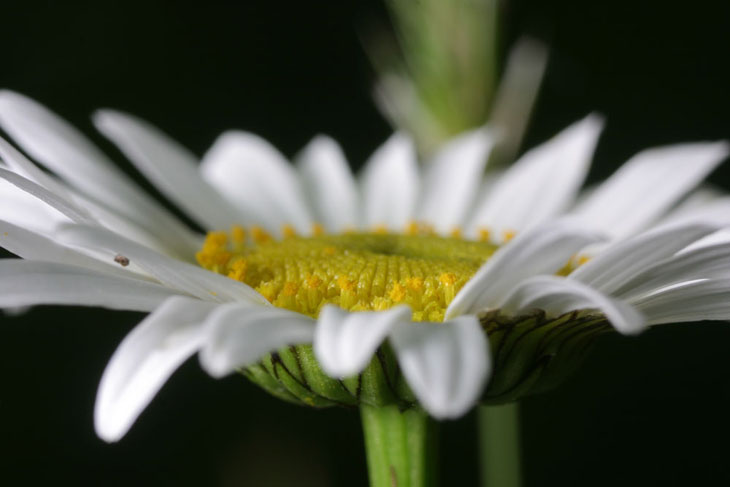
This came from a patch of wild daisies down near the river, many of which served as eyries for crab spiders (I think I’m mixing metaphors without goggles again) that were making a serious dent on the hymenoptera population in the area – every one I found either had a meal in chelicerae, or soon obtained one. They tended to be shy and sidled from the center of the bloom to the edges and underneath as I approached, meaning some of my shots were taken from flat on the ground aiming against the sky as the spiders tried to hide. But in the middle of it all, I just nabbed a quick perspective from a sitting position.
Back home, I found another crab spider occupying the salvia plant I’ve had for a while now, which has undergone two transplantings – the first almost killed it, but it recovered nicely with the second and is now blooming madly.
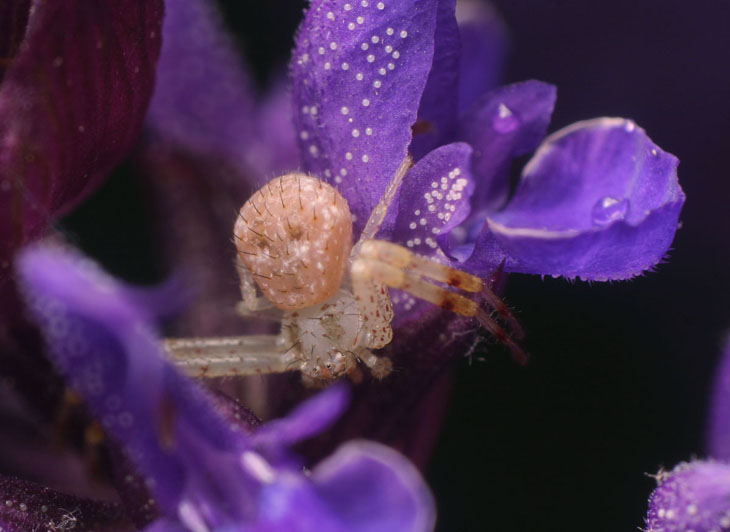
This guy was hiding not so much from me, but from the collection of small red ants that had taken over the stalk for a short while – don’t ask me what defines the difference between food sources and deadly threats to spiders, because I don’t know, but the spider certainly wasn’t viewing the ants as an easy meal. Possibly it was idea that capturing one would have triggered a defensive odor that brought others swarming to attack.
I’ve mentioned that some images are vastly improved by choosing the right angle to shoot from, and this illustrates one example. On the same bushes housing the mantids have been a few assassin bugs, and typically what you might see in examining the bush would be something like this:
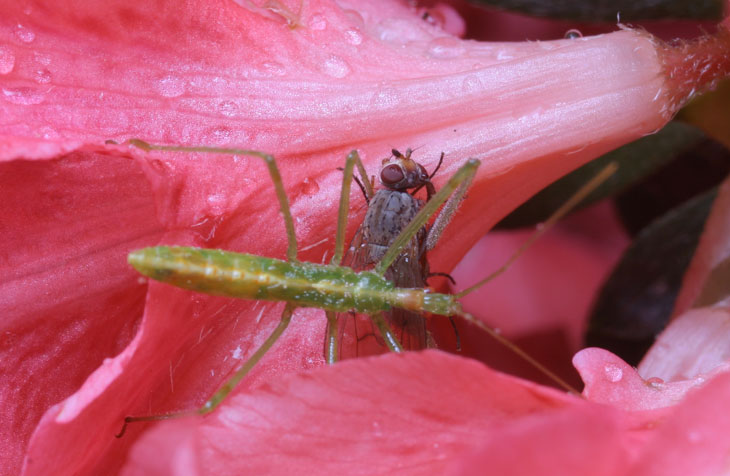
But a little effort in maneuvering and positioning can change the image dramatically, and even produce a faux look of despair from the captured housefly:
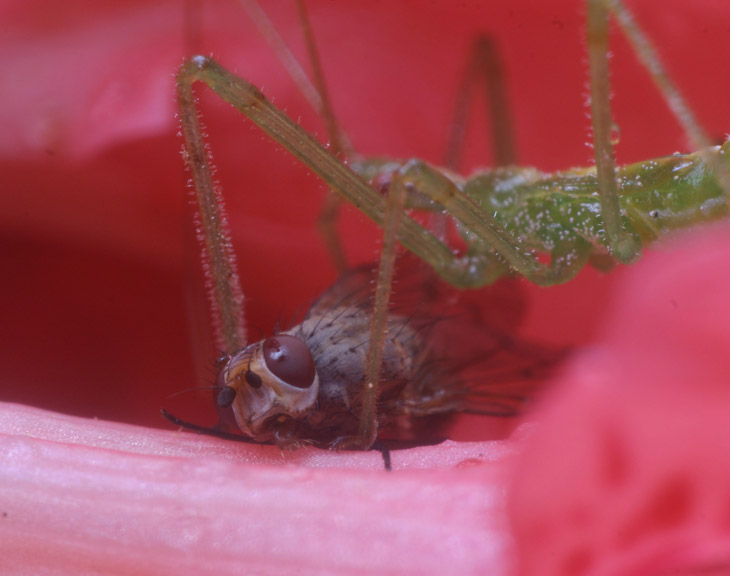
There’s so much at work here: the raindrop that produced a reflection from the flash, making the compound eyes appear to have a frantic wide-eyed look; the open-mouthed illusion; the fact that we never see flies not perched on their hexapod of legs; and even the peculiar angle of the head. All of it produces something we expect to see from people, not from insects, and makes us relate a bit more to what is strictly an imaginary emotion. It helps illustrate how we can be manipulated by inherent social reactions.
And a tighter crop of the same image, because I’m pleased with the detail captured:
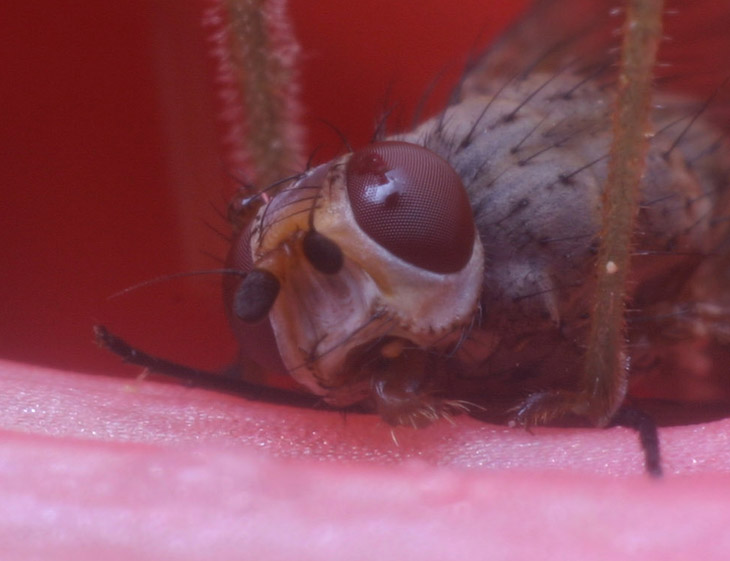
If you see a goatee and perhaps even a tongue, shame on you – you’re not detaching yourself in a professional manner. But now you can’t unsee it, can you? ;-)



















































